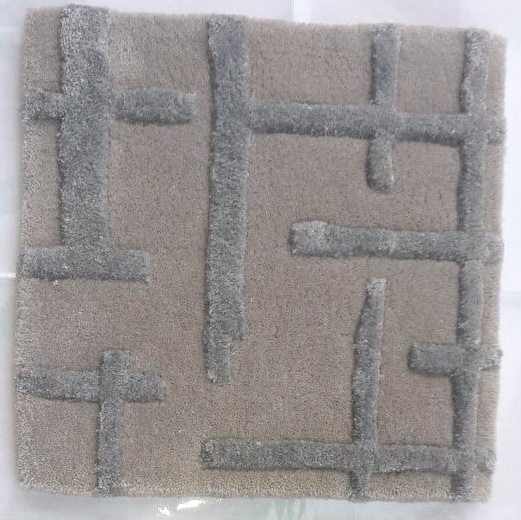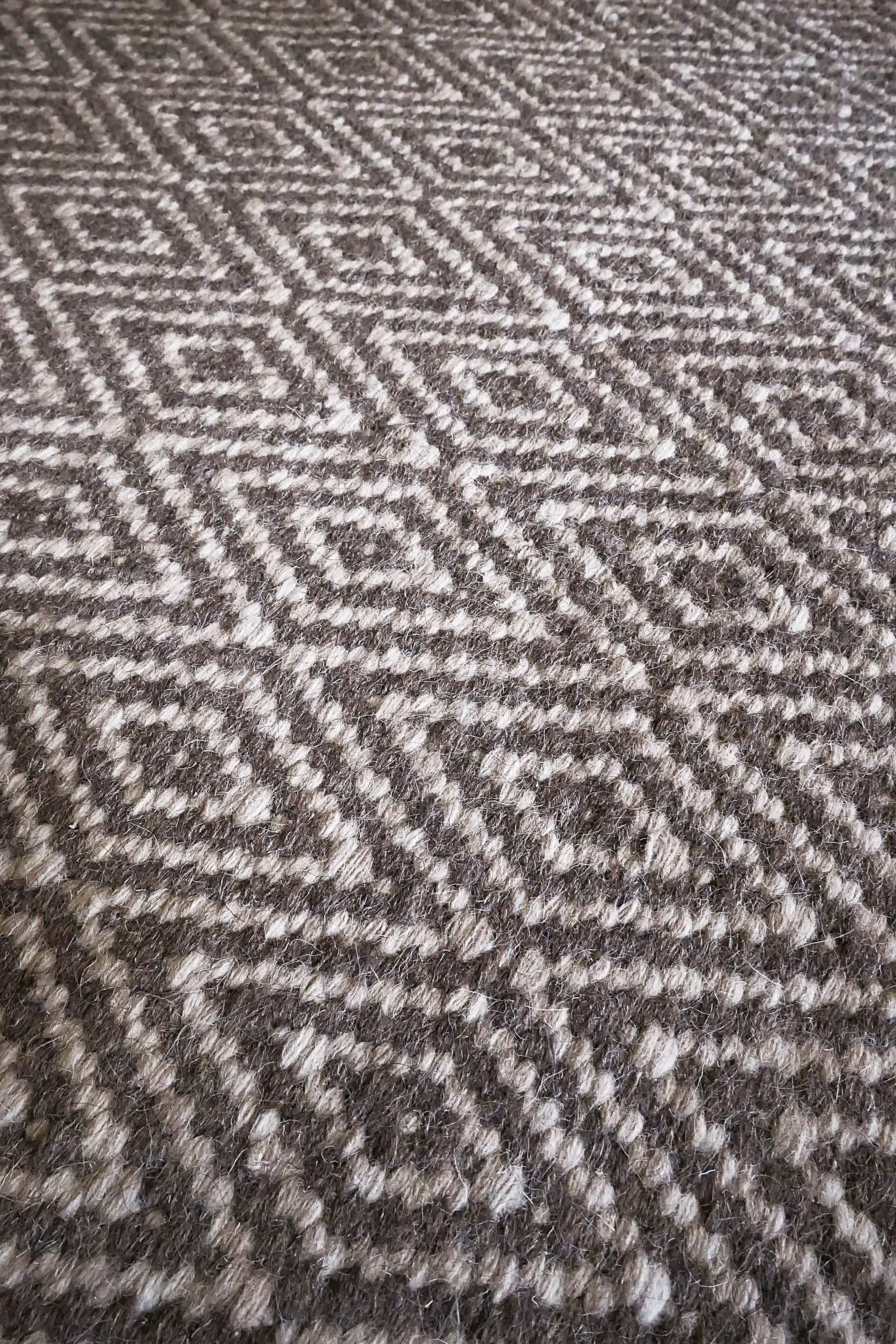Hand tufted
The design of the rug is printed on a sheet of paper or plastic. Its outline is perforated with a needle. A canvas is stretched in a frame. The pattern is then placed on the canvas and coated with ink. The ink passes through the holes and prints the design.
With the help of a manual or electric gun, the wool is introduced by tufts into the canvas. The manual gun is more precise and used to reproduce a fine design accurately. It is common to use both tools on the same rug.
Colours are applied on after the other. When all the patterns are done, the rug is turned over and shaved.






















